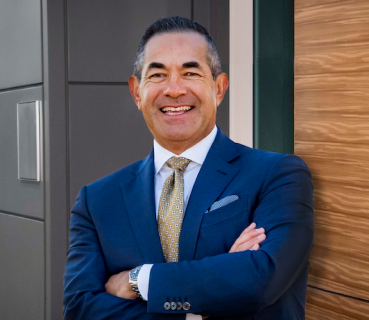Need Tailored Business Continuity Insights?
Contact Us Now for Personalized Guidance!
Knowing what roles should be represented on the business continuity management (BCM) team and what kind of people should fill them is an overlooked key to success in making organizations resilient. In today’s post we’ll look at what the slots on a BCM team should be and the traits and skillsets needed in the team’s staff and leadership.
Related on MHA Consulting: Who Does What: The Most Critical Job Roles in IT Disaster Recovery
BCM Team Roles
This week’s blog will look at one of the key factors that determines how successful a company is in avoiding and recovering from outages and protecting its stakeholders: the roles represented on its BCM team and the skillsets and personality traits of the people chosen to fill them.
The roles that should be represented on a company’s BCM team change over time depending on the maturity of the program. The initial group, which lays the groundwork for the program by preparing the standards, training, and processes, should consist of the following:
- Sponsor: The senior management individual with overall responsibility and accountability for the business continuity program.
- Business Continuity Manager: The individual with direct responsibility for the business continuity program.
- Assistant Continuity Manager: The backup to the Business Continuity Manager. This could be a titled position or an assigned position.
- Administrative Assistant: The individual responsible for supporting the BCM team. This is often an administrative assistant working in the Business Continuity office, if it exists, or one of the individuals on the administrative assistant team.
As the program matures, various other roles will be needed, possibly including the following:
- Building Maintenance or Facilities Manager: This individual can provide information on what mitigation steps are already in place for the facility, such as fire suppression and electrical service.
- Facility Safety and Security: This person should already have parts of the disaster plan in place in terms of fire safety, theft prevention, limiting building and room access, and so on.
- Human Resources: HR people have ready access to up-to-date information about the individuals who are important to the plan.
- Line Management: These individuals tend to know the most about what is critical for getting work done in their areas of responsibility.
- Community Relations: This individual will act as a liaison between the organization and the community to coordinate any community assistance that may be needed while recovering from a disaster.
- Public Information Officer: This is the company’s voice to the outside world. This role is crucial in getting accurate information out to customers and vendors.
- Sales and Marketing: This team knows the organization’s customers the best and can provide insight on what level of service they require.
- Finance and Purchasing: With its intimate knowledge of the company’s vendors, this group can provide insight on what kind of support the organization can expect from them while recovering.
- Legal: The legal team can provide important insight on the legal ramifications of activities performed in response to an emergency.
Qualities Needed in a BCM Team Leader
Now let’s look at the human factor, the personality traits and skillsets the BCM team leader and members need in order to excel in their roles and create an effective program. We’ll start with the position of team leader.
The role of BCM leader is extremely challenging. Being a good BC manager takes a strong social profile. A BC leader has to be persuasive, decisive, good in a crisis, confident in dealing with executives, a good presenter, and negotiator, and empathetic in working with subordinates. The role also takes solid technical knowledge and ability (of BC standards and best practices, for example) and deep knowledge of the industry and organization. The BCM boss needs to know who the key players are at the company and how to get things done there.
Not many people have all these qualities.
Here are two things we see frequently: Many BCM managers are sound on the technical side but weak on leadership and managerial skills. Many leaders overestimate their overall level of expertise.
The effectiveness of enterprise BC programs depends not on the quantity of resources the program has at its disposal but the quality of its leadership.
How can you as a BC leader shore up any personal and professional weaknesses you might have? Educate and develop yourself to raise your skills in areas where you have gaps (focus on 3 to 5 key actions you can take over the next six to 12 months). And/or delegate responsibility for your weak areas to people who are skilled in those tasks (or at least seek advice from those people).
Look to capitalize on your strengths and manage your weaknesses.
Staffing the BCM Team
Now it’s time to staff your BC team, whether that means bringing in new people or maximizing the efficiency of your current staff.
Like you, your staff members are going to have strengths and weaknesses. It’s the leader’s business to get a grasp on what these are and also to think about what combination of skillsets is needed to enable to the team to succeed.
Work gradually toward assembling the best team you can to carry out the critical roles. Don’t make the mistake of assuming that your personnel problems can be solved by bringing in more people. What you need are the right people with the right skillsets.
A common mistake is that managers hire new BCM practitioners with the idea of finding something for them to do once they’re onboard. If a baseball manager did this, he might end up with nine first basemen. No good manager would ever do this and no BCM leader should either.
What you need to do is assess your needs, assess your people, then match the latter to the former.
Below is a list (taken from my ebook 10 Keys to a Peak-Performing BCM Program) of the key skill sets that you should look at in assessing your current staff and bringing in new hires. The list is divided into personal and professional skill sets.
Personal Skills
- Reactiveness. You want people to be attentive and take matters with due seriousness, but not to the point where they overreact.
- Tenacity. It is important to have people on your team who remain productive and determined when the going gets tough.
- Drive. Does the person take the initiative and make things happen?
- Leadership. Most good leaders have two key qualities: they make it their business to know the strengths and weaknesses of the members of their team, then in interacting with team members individually, they adapt their style to the personality of each individual.
- Conscientiousness. Does the person keep the interests of the team and organization at the front of their minds?
- Extraversion. Is the person comfortable with making and maintaining connections with a variety of people throughout the organization? Business continuity planning is a social activity.
- Intellectual Openness. Is the person open to trying new ideas, thoughts, or approaches? In a field where one of the few constants is change—in technology, processes, and personnel—the quality of intellectual openness is essential.
Professional Skills
- Company Knowledge. Does the person have a deep knowledge of the organization, including its structure, management, mission, and strategy? Do they have a sound understanding of the goods or services it produces?
- BCM Methodology. Do they have a sound understanding of current BCM methodology, its components, and how they should be applied? Do they have a working knowledge of industry standards and how they apply to the organization?
- Program Administration. Do they understand the key components of program administration (such as oversight, governance, policy, and standards) and how these should be applied and implemented?
- Crisis Management. Do they understand the key components of crisis management (team, plan, mock disasters, emergency notification system, etc.) and how these should be implemented to ensure a swift, effective response in the event of a disruption?
- Business and Disaster Recovery. Do they understand the key components of business recovery (plan development, recovery strategies, testing, maintenance, etc.) and how these should be applied to ensure a timely response?
These are the personal and professional traits and skills your team members need in order to be effective in building your program and protecting your organization against disruptions.
Quantifying Skillsets and Strengthening the Team
One thing that can help in building a balanced team is to quantify the members’ skillsets. Make a spreadsheet, list the team members on the left, and write down across the top the skills you think are important. Then assign each team member a rating of between zero and five for each skill, depending on their willingness and ability to carry out that role. You could then color code the different fields, using red to indicate weakness in an area, yellow to indicate moderate competence, and green to show strong ability. This lets you assess the range of everyone’s skills at a glance.
The final step, now that you understand your team, is to make it better. Here are seven ways to do so:
- Put the right team members in the right seats.
- Identify who needs training.
- Remediate weaknesses.
- Determine who wants to learn something new.
- Use the stronger team members to train the others.
- Identify people who need to look elsewhere.
- Identify people you can delegate to.
Elevating the Program and Improving Resilience
Understanding the critical roles within a business continuity management (BCM) team and selecting individuals with the right skillsets and personality traits is essential for creating a resilient organization. The composition of the BCM team should evolve with the maturity of the program, ranging from foundational roles like the Sponsor, Business Continuity Manager, and Administrative Assistant to more specialized roles as the program grows.
The BCM team leader should possess a combination of technical knowledge, leadership skills, and industry expertise. By assessing the team members’ strengths and weaknesses—and balancing and improving their skillsets—the leader can simultaneously elevate the BCM program and improve the organization’s resilience.
Further Reading

Michael Herrera
Michael Herrera is the Chief Executive Officer (CEO) of MHA. In his role, Michael provides global leadership to the entire set of industry practices and horizontal capabilities within MHA. Under his leadership, MHA has become a leading provider of Business Continuity and Disaster Recovery services to organizations on a global level. He is also the founder of BCMMETRICS, a leading cloud based tool designed to assess business continuity compliance and residual risk. Michael is a well-known and sought after speaker on Business Continuity issues at local and national contingency planner chapter meetings and conferences. Prior to founding MHA, he was a Regional VP for Bank of America, where he was responsible for Business Continuity across the southwest region.


